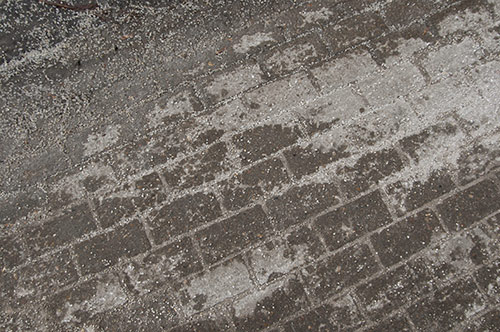
When it comes to de-icing sidewalks and driveways after a winter storm, not all salts are created equal.
Most of the popular de-icing products sold in stores are chloride-based, each containing a different combination of salt. Knowing the type of salt you are buying at the store could make a big difference in protecting plants, grass and even the concrete around your home.
Regardless of the product, use just enough de-icer to get the job done. Excess amounts can harm plants and concrete surfaces, especially rock salt and potassium chloride. All of the chloride-based products can be toxic to plants and animals. Blanketing areas with de-icer is unsafe and won’t be any more effective than smaller amounts.
Regardless of product used, homeowners should take the time to remove as much snow and ice as possible before applying a de-icing product.
If you throw a de-icer into the midst of snow, it is going to have very little effect. It will melt some, but it just doesn’t have the efficacy it has when it is on ice. And in some cases, it’s OK to let the sun help.
Take a look at what the temperatures are going to be. If you get a clear day following the storm, you can have a lot of the work taken care of for you by Mother Nature. Let solar radiation take the work out of your hands.
Want someone to take care of it for you? No problem!
Morse Engineering selects the appropriate de-icing materials to minimize damage to your paving and landscape while maximizing ice melting results. For serious applications our salt spreaders are equipped with calcium tanks to “pre-wet” the salt in order to release heat and attract moisture. The pre-wetting process ultimately creates a brine for fast and effective melting of stubborn ice at air temperatures well below freezing.
Source: ksre.k-state.edu
